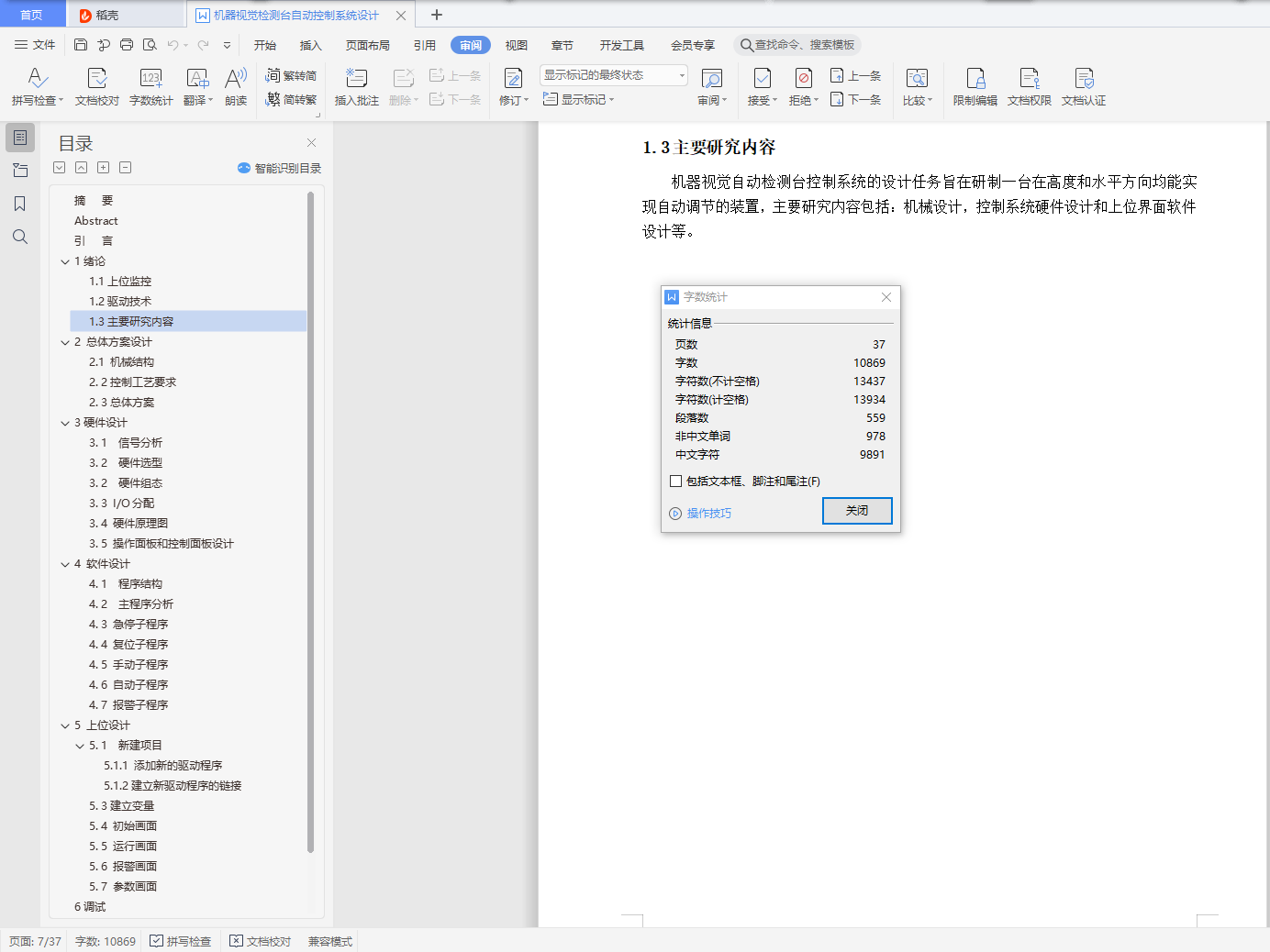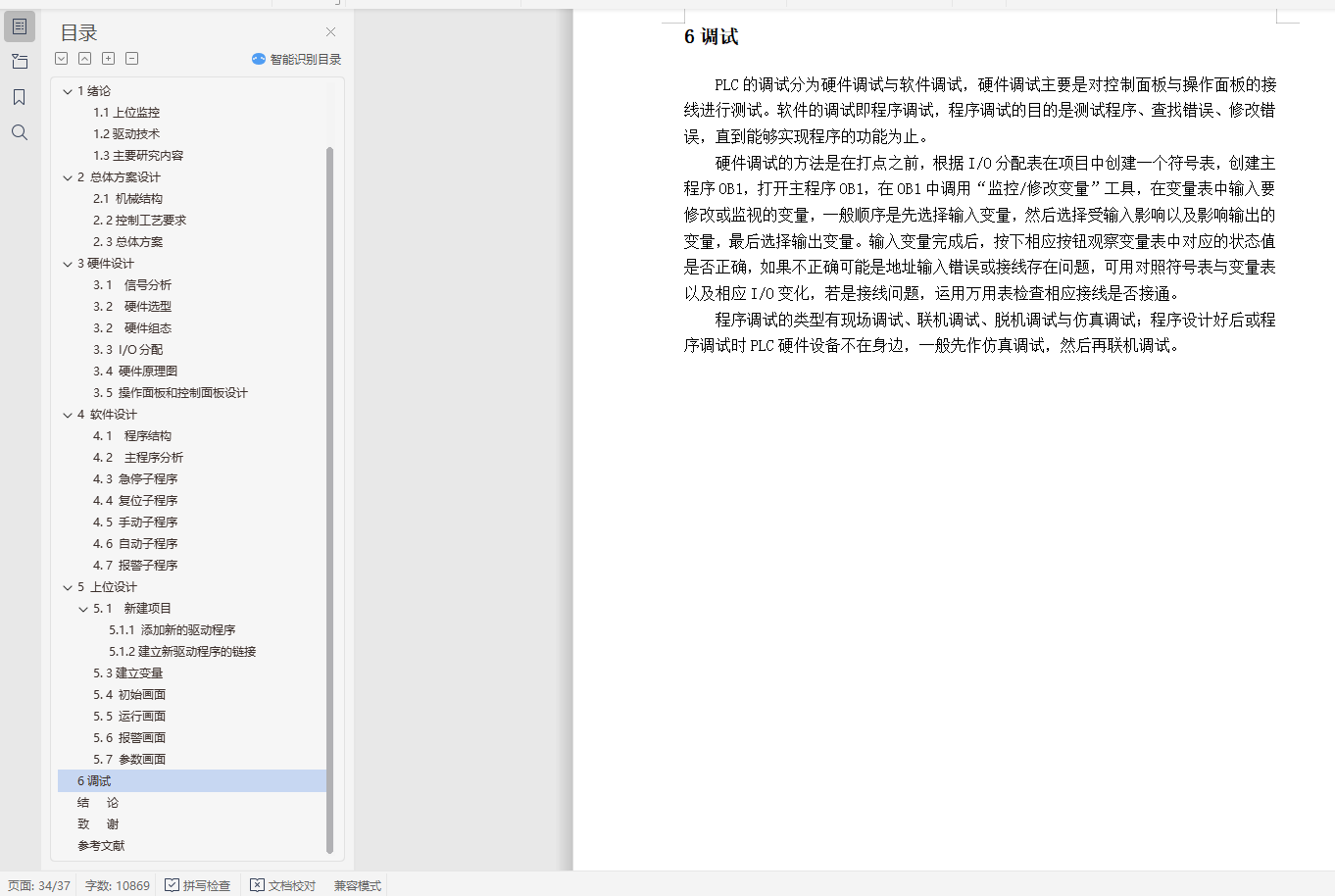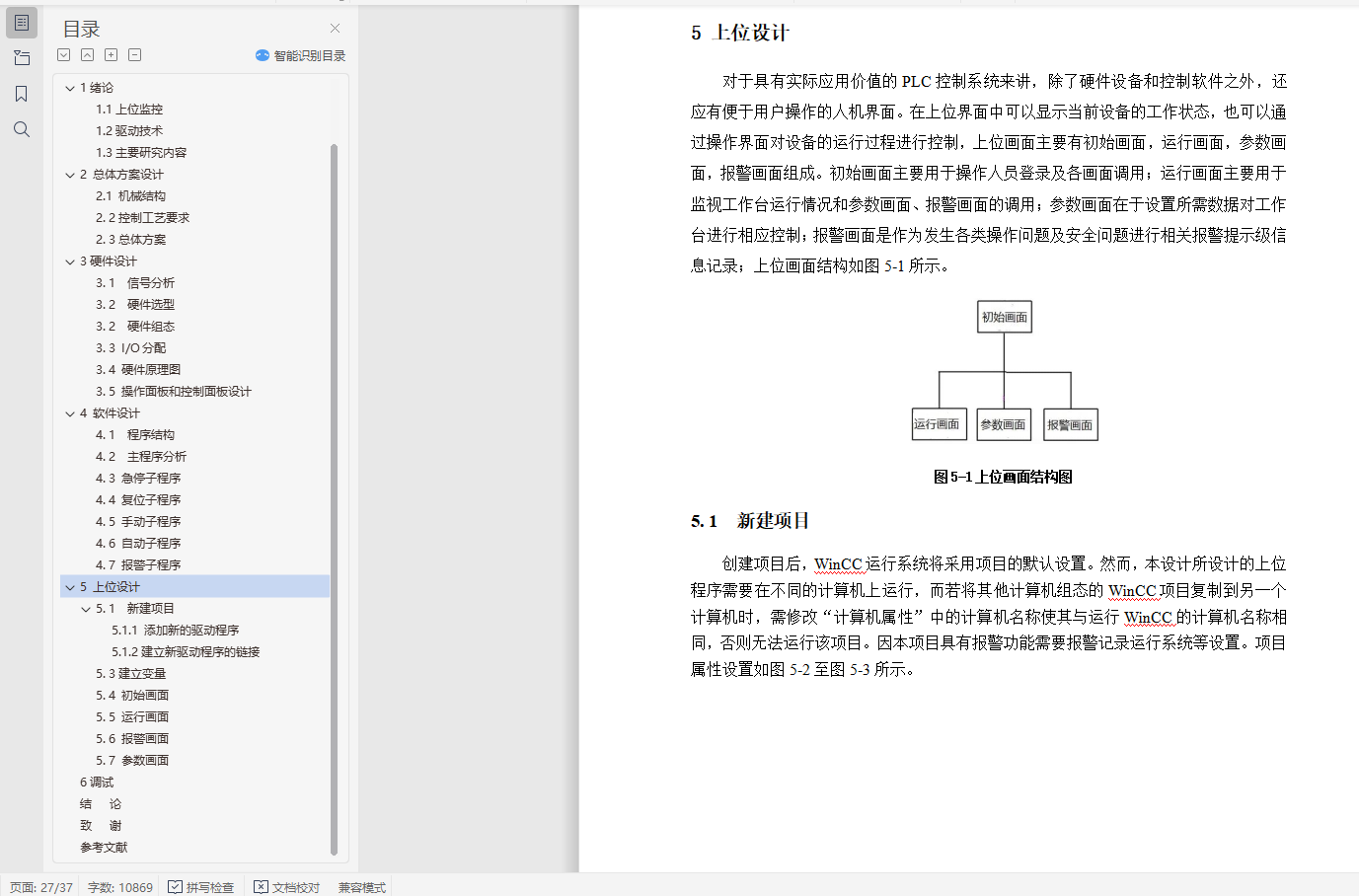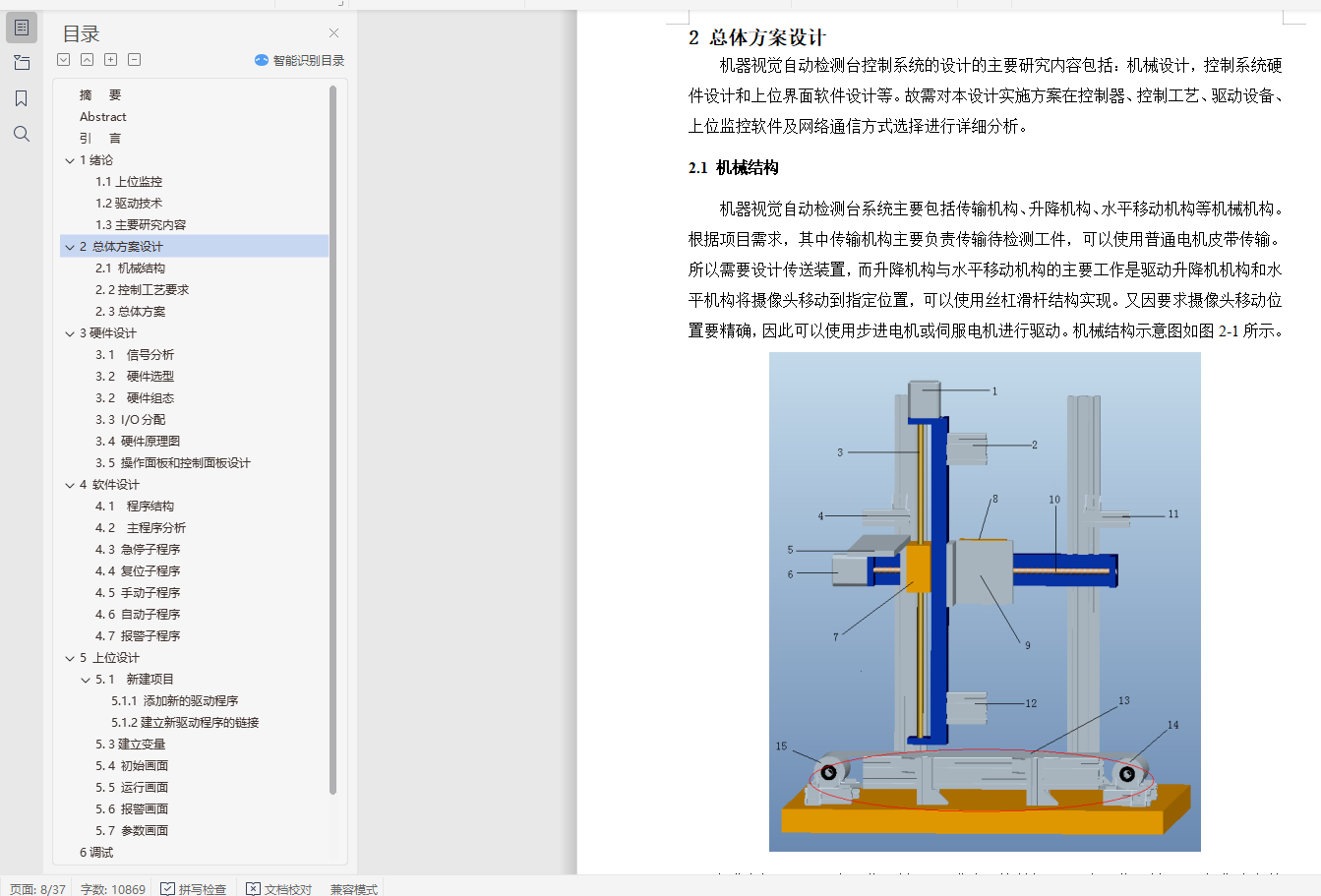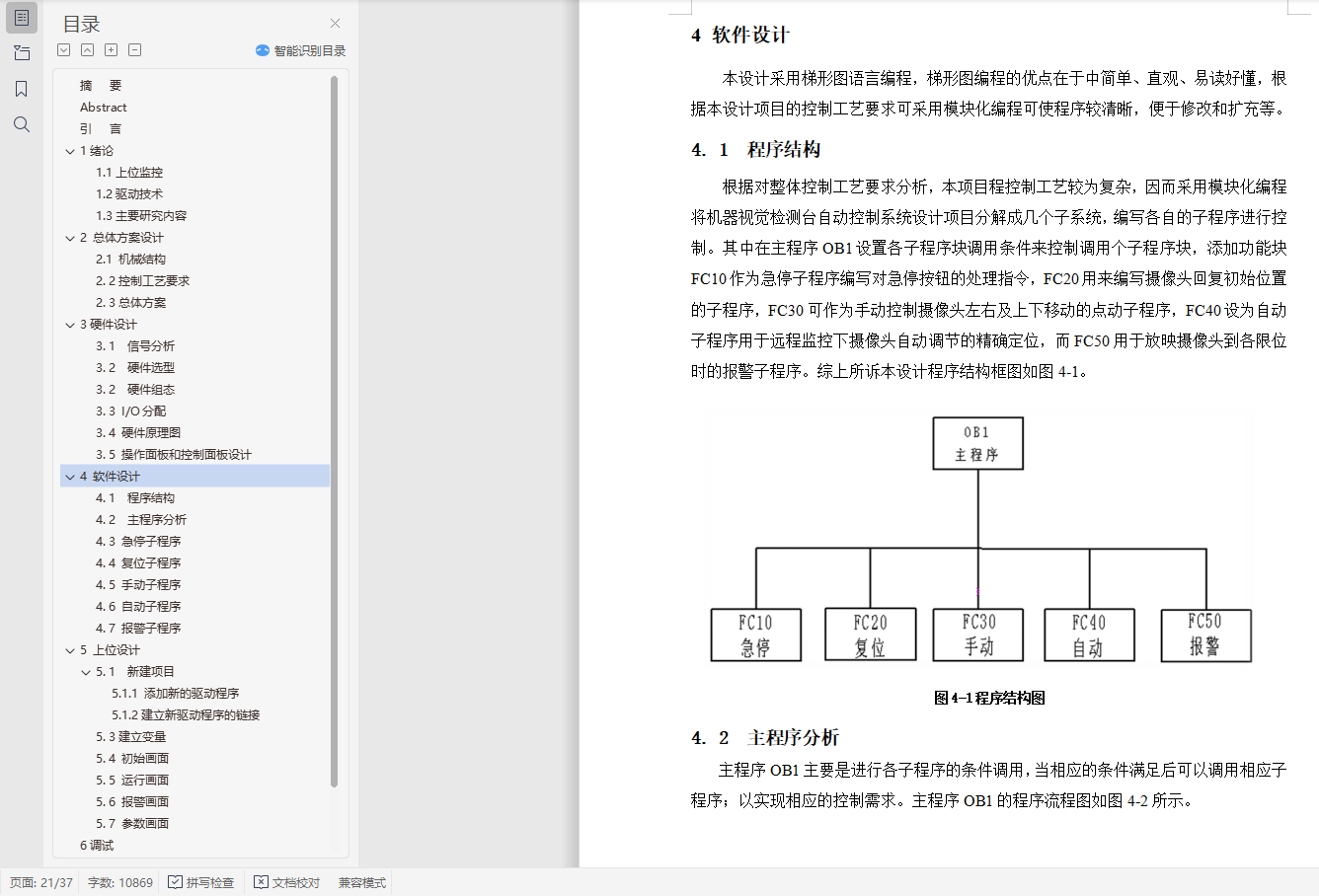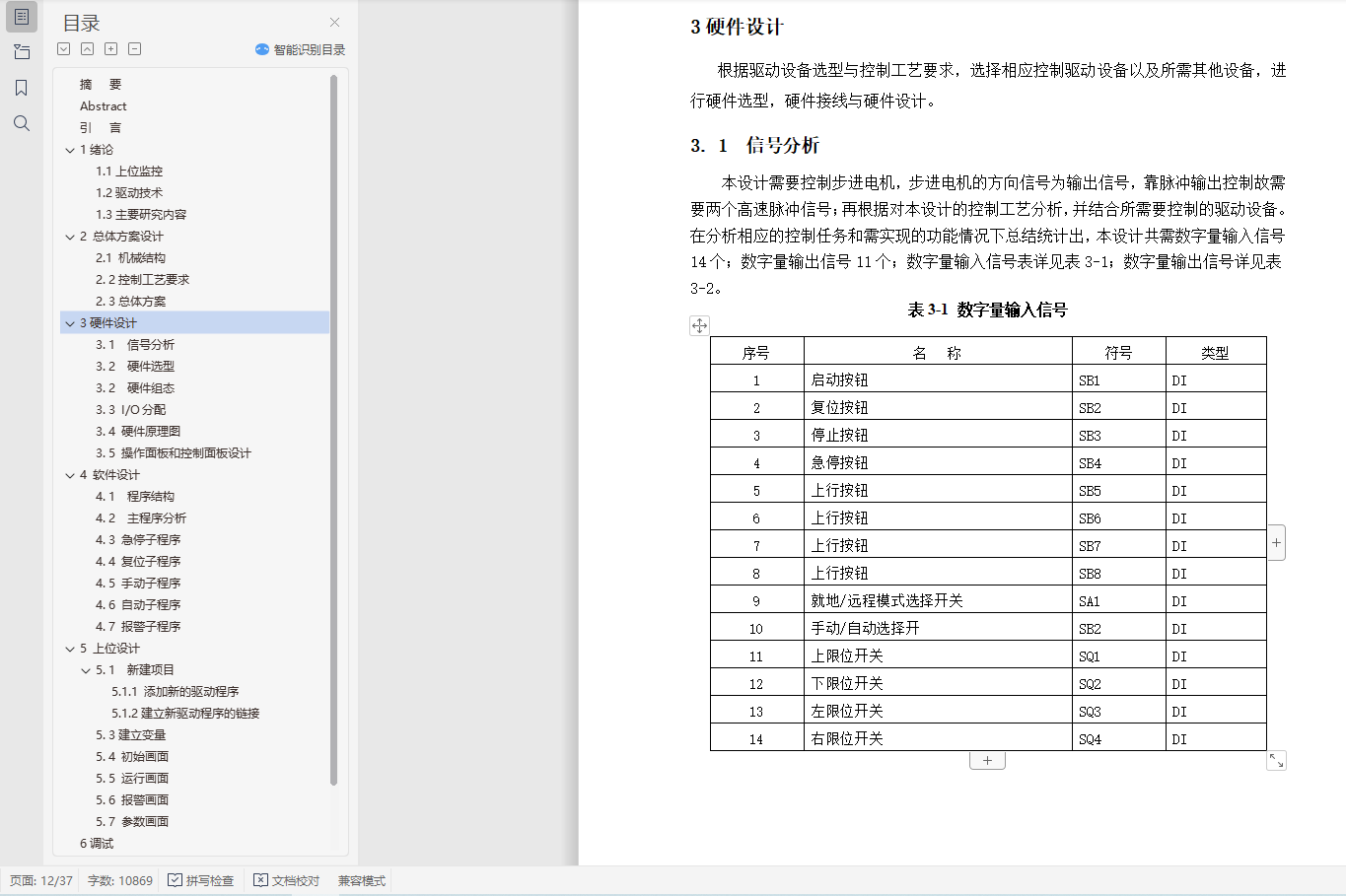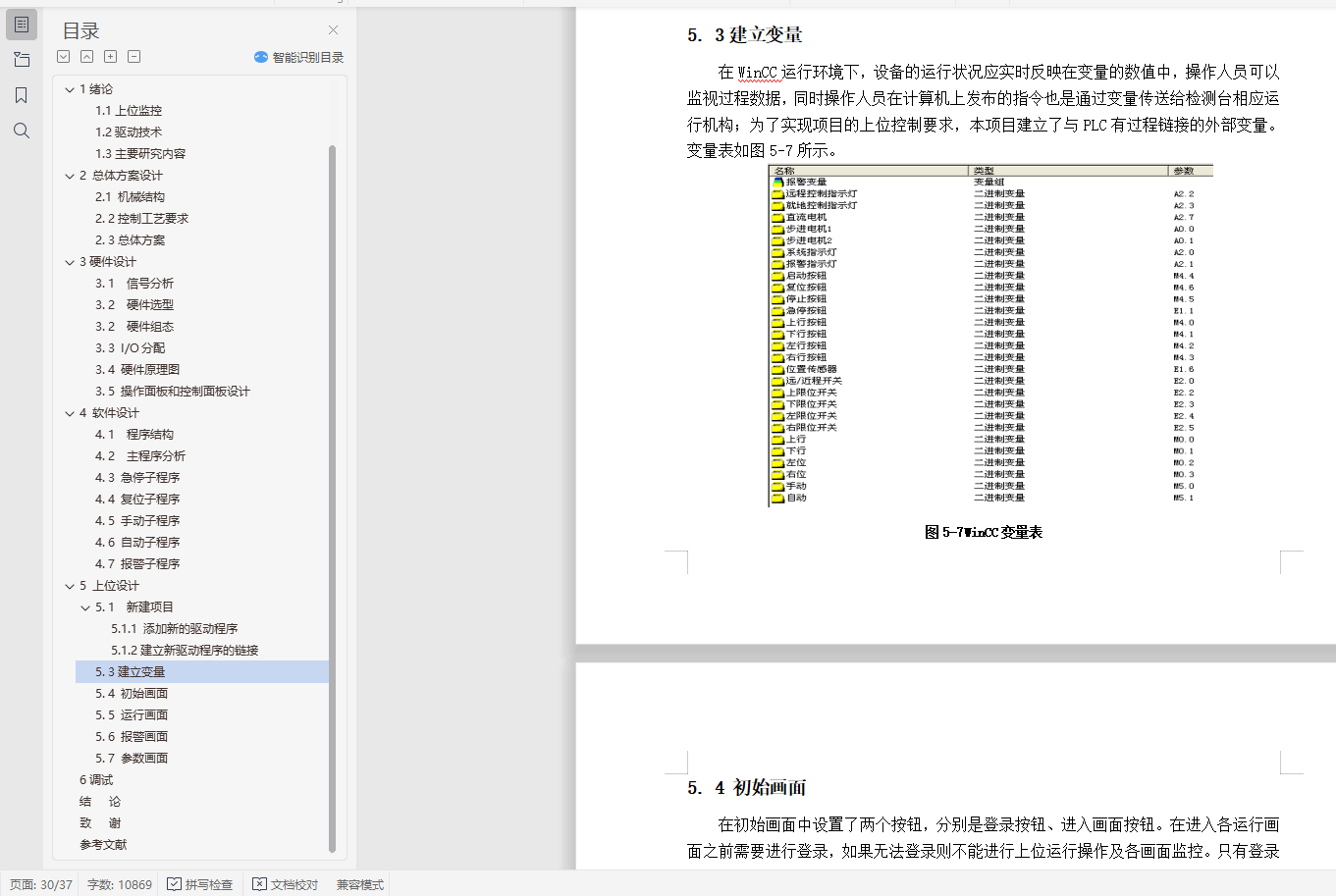摘 要
为了提高机器视觉检测系统中摄像头的定位精度和实现摄像头的全自动调节,本文结合实际工业生产需求详细叙述了怎样进行机械机构设计、硬件选型与硬件接线以及精度计算设计等工作。其中硬件设计包含怎么选择合适的控制器、控制工艺、驱动设备、上位监控软件及网络通信方式等机器视觉检测台自动控制系统中的重要组成部分;精度计算设计主是指通过计算步进电机步距角与其高速脉冲频率的关系来实现摄像头移动位置的精确定位。
关键词:自动检测系统、PLC、步进电机
Abstract
Precision detection technology as the key to promoting industrial development and the efficiency of detection to some extent reflects the development of the manufacturing sector; for machine vision inspection system has the advantage of high precision, on-line, real-time, non-contact, etc., with industrial production field of automation requirements continue to increase, machine vision inspection applications in various fields more widely, such as assembly line parts recognition positioning, size and location of the measurement of mechanical components, parts flaw detection, mechanical parts assembly Appearance inspection and product testing completely.
In order to improve the positioning accuracy of the machine vision inspection system in the camera and the camera's automatic adjustment realization, this paper actual industrial production requirements described in detail how mechanical structure design, hardware selection and the hardware wiring and accuracy of the calculation and design work. The hardware design includes how to choose the right controller to control the process, drives, PC and network monitoring software, communications and other machine vision inspection station automatic control system, an important part; precision computing design of the main means by calculating the stepper motor step Relationship angle from its high-speed pulse frequency to achieve precise positioning camera movement position.
Keywords: Automatically Detecting System, PLC, Stepper Motor.
目 录
摘 要 I
Abstract II
引 言 1
1绪论 2
1.1上位监控 2
1.2驱动技术 2
2 总体方案设计 4
2.1 机器视觉检测台控制系统构成 4
2.1.1 机械总体结构 4
2. 2控制工艺要求 5
2. 3总体方案 5
3硬件设计 8
3. 1 信号分析 8
3. 2 硬件选型 9
3. 2 硬件组态 10
3. 3 I/O分配 13
3. 4 硬件原理图 14
3. 5 操作面板和控制面板设计 15
4 软件设计 17
4. 1 程序结构 17
4. 2 主程序分析 17
4. 3 急停子程序 19
4. 4 复位子程序 20
4. 5 手动子程序 20
4. 6 自动子程序 20
4. 7 报警子程序 22
5 上位设计 23
5. 1 新建项目 23
5.1.1 添加新的驱动程序 25
5.1.2建立新驱动程序的链接 25
5. 3建立变量 26
5. 4 初始画面 27
5. 5 运行画面 27
5. 6 报警画面 28
5. 7 参数画面 29
6调试及解决方案 30
结 论 31
致 谢 32
参考文献 33
